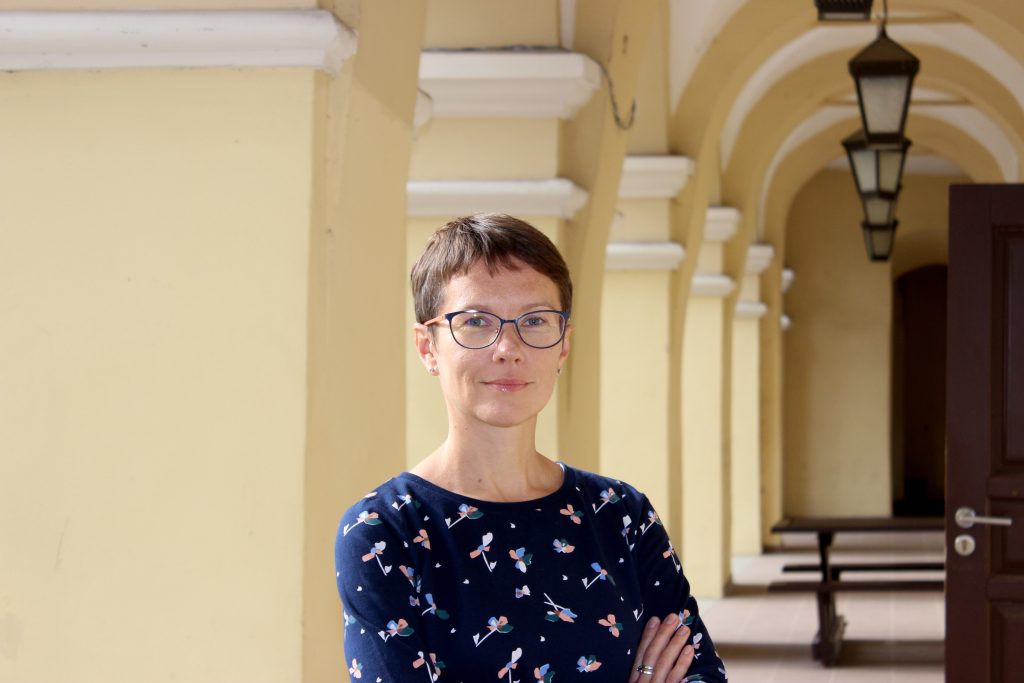Millions of lives sepsis: what determines it

Inadequate reaction
Once the sepsis develops, every minute can cost life. The anesthesiologist-reanimatologist Assoc. Mindaugas Šerpytis.
He pointed out that the history of sepsis as a disease is very long. The word « sepsis » is of Greek origin, meaning rot, decay. The first time was mentioned more than 2.5 thousand. years.
« Since the 19th century, when the bacteria have been identified as the cause of infection, sepsis has been associated with infection and mainly to bacterial infection. For decades, sepsis has been treated as blood infection, believed to be the cause of blood -released bacteria, which are carried out in the body. Simple, ”said Mr Sherpytis.
Defends with a bomb
Despite the long history of this disease, the doctor emphasized, only the real sepsis development mechanism was discovered in the last 30 years, following various research. « The human immune system has a decisive factor. For bacteria, viruses, fungi through damaged skin, mucous membranes deeper into our tissues or good conditions for bacteria or other microorganisms to multiply our internal organs due to impaired function or structure, The immune system is very stormy in the immune system.
He gave examples: a birthday candle burns, we can blow it, but we can take a fire extinguisher and spray all its contents on one single candle. In one case or another, we will extinguish the candle, but with the fire extinguisher we will do unnecessary damage to the objects we need.
« If we see an enemy soldier outside, disarm, we can send our soldier with a rifle. But we can take a very powerful bomb, an explosive. In both cases, we will defeat the enemy, but we will die from a powerful bomb. Jarpytis.
Frequency: About $ 50 million in sepsis in the world. people, it determines $ 10-11 million. deaths. / Photo by Freepik.com
Damages blood vessels
The doctor said that the primary signs of sepsis are very non -specific, common in other diseases – pneumonia, urinary tract, viral infections such as flu: fever, general weakness, muscle, headache.
« It is very important to recognize sepsis as early as possible and start treatment, but it is very difficult to do so, details are needed, » said Mr Šerpytis.
What is the sepsis development chain? This disease is the most affected by the blood vessels and the cells that cover them.
« The blood vessels lose the tone, they expand, their permeability, the tissues begin to swell, the coagulation system begins to swell, the microcroxes, micro -ombas, which clog the small blood vessels.
As a result, all organ systems are damaged during sepsis. However, there are differences from, for example, a flu, which is often confused by sepsis.
We have a fever, we feel chills, but we are quite active. In the case of sepsis, the patient will be sluggish, apathetic, drowsy.
If the sepsis is damaged by four or more organ systems, mortality may be 80 %. If three systems, the likelihood of survival is 40 percent.
« Patients emphasize that they have never felt so bad. The increased breathing, weakness, sluggishness remains even when the temperature drops. The skin is cold, marmored.
Three at risk groups
There are three risks to which people entering the sepsis can develop more often than others. These are people with chronic illnesses.
« Various chronic diseases have one or another effect on the immune system. Both the disease itself and the drugs that have the immune system. Another risk factor is the age. The older the person, the greater the sepsis risk. The limit is 65 years and more.
Not only are older people at risk, but babies are also at risk because their immune system is still learning.
Cornerstone of treatment factors
How is sepsis treated? There are three cornerstones. One of them, which determines successful treatment, is timely antibacterial therapy. The earlier the patient appeals and the earlier this therapy starts, the more success.
« The second factor is the search for the source of the infection. While the virus reproduces and supports infection, the whole team is actively looking for where and what is a source of infection that has become a released button for our immune system.
As we have already mentioned, sepsis damage all organ systems. One – more, the other less. One of the goals of the intensive care team is to maintain the functions of organ systems if they are impaired. « We try to win time, » said the doctor.
For example, different hemodynamic parameters are monitrated. When renal function is impaired, renal therapy is started, an artificial pulmonary ventilation machine is connected, etc.
Differences: We have a fever with the flu, we feel chills, but we are quite active; In the case of sepsis, the patient will be sluggish, apathetic, drowsy. / Photo by Freepik.com
Bacterial resistance
One of the biggest challenges that doctors face in the treatment of sepsis is bacterial resistance to antibacterial therapy.
« Bacteria are becoming more and more resistant to existing antibiotics, decreasing new antibiotics. It is very difficult to choose effective antibacterial treatment. Some forms can be resistant even to all the antibacterial drugs currently present.
One of the main elements of sepsis treatment is blood crops taken from various possible areas of infection sources. They are taken to find out what the infection agent is fighting, which medicines they are sensitive to.
« In the past, it took 72 hours and longer. Now molecular methods allow you to identify within a few hours what we have to do with, » the doctor said.
Leads to many deaths
Sepsis is one of the most common diagnoses. According to the data available to M. Šerpytis, the disease in the world affects about $ 50 million each year. people and it determines 10-11 million. deaths.
In Europe, sepsis is caught by about $ 3 million. people per year. Mortality depends on the patient’s age, disease, their forms.
« In a group of 80-85 years, mortality is five times higher than 65-75 years old. If sepsis has been violated by four or more organ systems, mortality can reach 80 % if three systems are 40 %, » Serpytis said.
Not only are older people at risk, but babies are also at risk because their immune system is still learning.
Survival also depends on the rate of development of the disease. What determines him? « Depends on the pathogen. Different pathogens are differently aggressive. Depends on the amount of pathogens entering the body, how fast the bacterium reproduces. Of course, our immune system answers how it is able to control, localize how stormy reacts, » the doctor said.
He emphasized that it has not yet been answered as to why some patients respond to the same infection in such a stormy and harm, while the reaction of others is more weighed.
A large number of medical teams are used to treat sepsis. They also have a severe emotional charge, as the disease is very fast, leading to many deaths, and each of their staff, not to mention the patient’s loved ones, is very painful.
What is the best prophylaxis of sepsis? More attention to risk groups for patients. Well -controlled chronic disease, careful adherence to medical recommendations, vaccination against viral infections.






/s3/static.nrc.nl/images/gn4/stripped/data133727122-75f5ed.jpg|https://images.nrc.nl/SX5e0xkbzDjfCe9xugbcf1clf9o=/1920x/filters:no_upscale()/s3/static.nrc.nl/images/gn4/stripped/data133727122-75f5ed.jpg|https://images.nrc.nl/8yGUNLEN1pcnIkvcBnZeifTROls=/5760x/filters:no_upscale()/s3/static.nrc.nl/images/gn4/stripped/data133727122-75f5ed.jpg)

